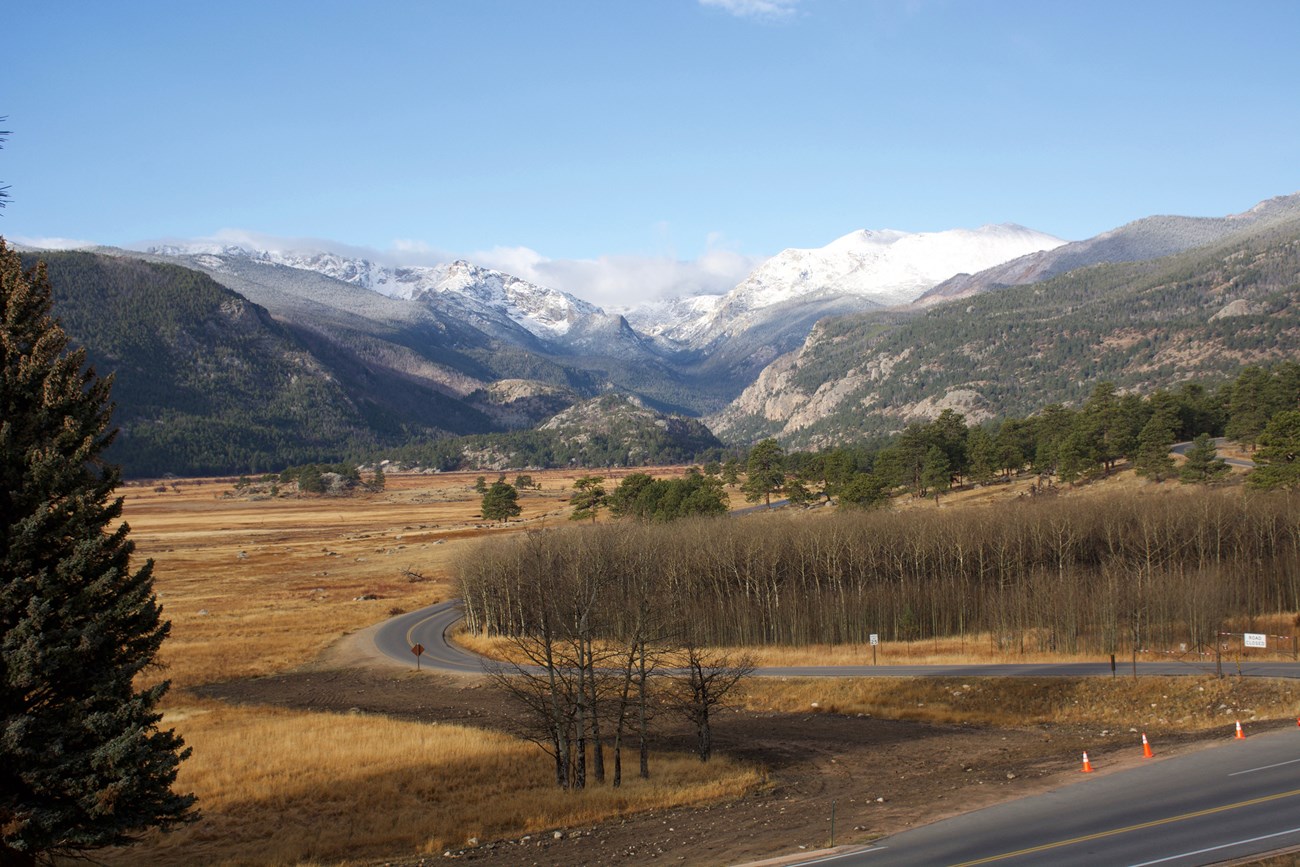
NPS Photo / Jim Ecklund The Montane ecosystem has the richest diversity of plant and animal life. Meandering rivers and open meadows are surrounded by hilly slopes. Wildflowers blanket the meadows throughout the summer growing season. 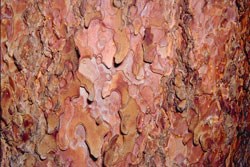
NPS Dry, south-facing slopes of the Montane often have open stands of large ponderosa pines. Spacing of ponderosa pines is somewhat related to available soil moisture. Grasses, other herbs and shrubs may grow between the widely spaced trees on dry slopes. As the pines become old, their bark changes from gray-brown to cinnamon-red, and the bark releases a pleasant fragrance when warmed by the sun. The long needles of ponderosa pines are attached to the stems in groups of two's and three's. North-facing slopes of the Montane escape some of the sun's drying action, so their soils contain more available water. As a result, the trees grow closer together and competition for sunlight produces a tall, slender growth form. The trees may be a mixture of Douglas fir, lodgepole pine, ponderosa pine and an occasional Engelmann spruce. A few shade-tolerant plants grow on the floor of the forest. 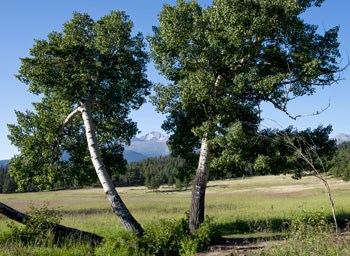
NPS Montane soils with high moisture content may support groves of quaking aspen, whose leaves turn golden-yellow in the autumn and whose whitish bark is easy to recognize. Along streams or the shores of lakes, other water-loving small trees may be found. These include various willows, mountain alder, and water birch with dark-colored bark. In a few places, blue spruce may grow near streams and sometimes hybridize with Engelmann spruce. Flat Montane valleys may frequently have water-logged soil and be unable to support growth of evergreen forests. The following landmarks in the park are part of the montane ecosystem. 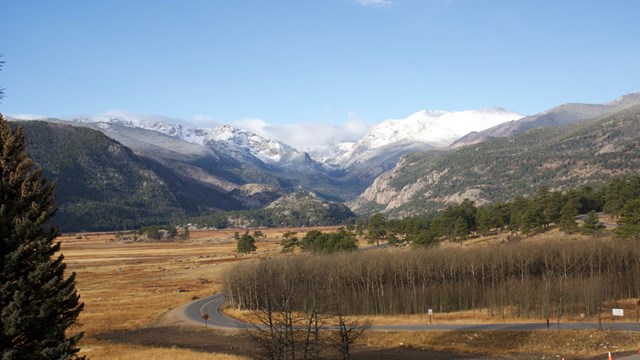
Moraine Park
East side of Rocky Mountain National Park 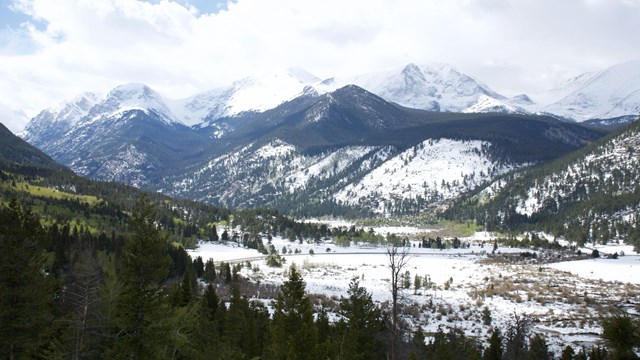
Horseshoe Park
East side of Rocky Mountain National Park 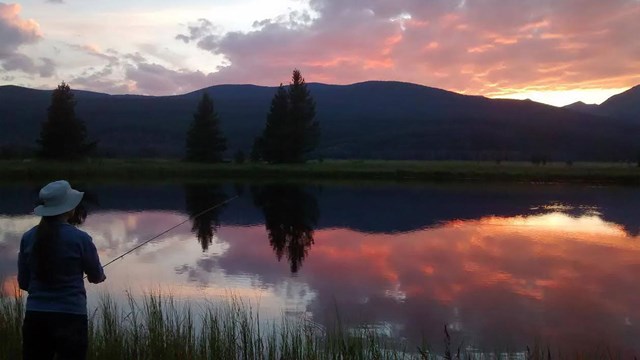
Kawuneeche Valley
West side of Rocky Mountain National Park 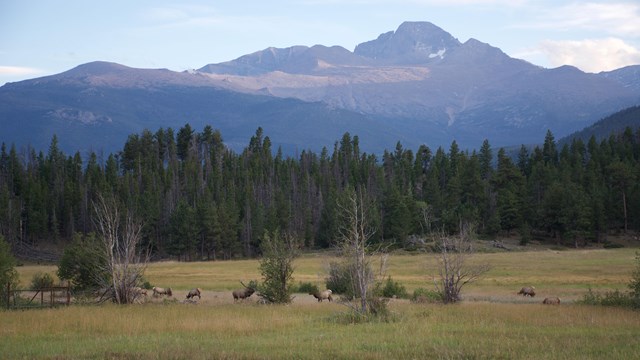
Upper Beaver Meadows
East side of Rocky Mountain National Park Follow the links below to learn about life in the Montane. 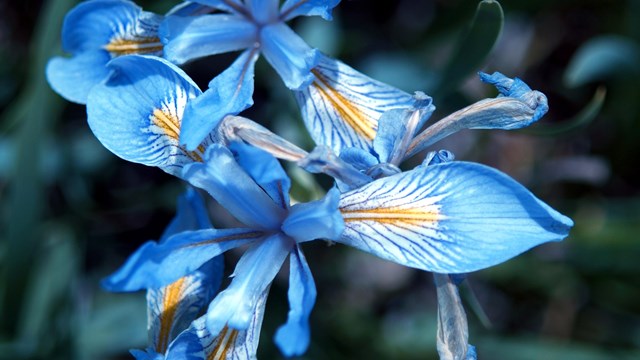
Mountain Iris
Flowers bloom in early summer when the meadows are wet. 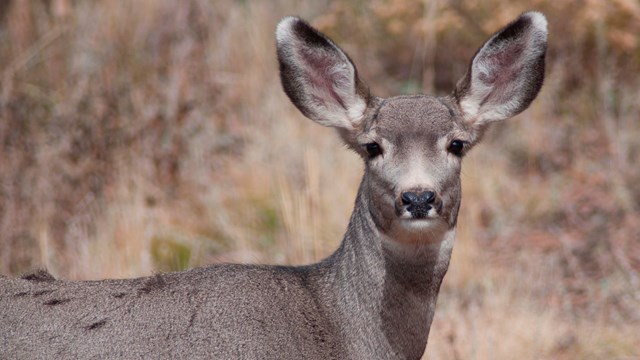
Mule Deer
Mule Deer are usually found in small groups in the trees. 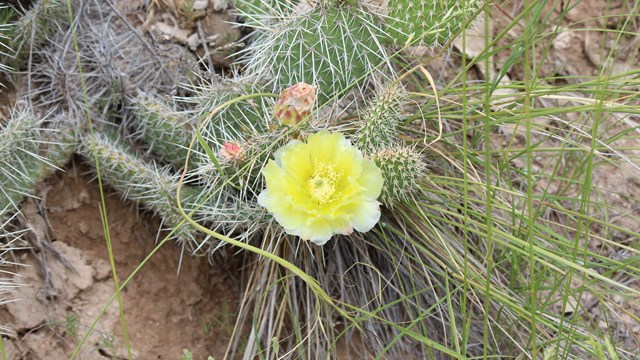
Plains prickly pear
Plains prickly pear cactus bloom even up here in the Rocky Mountains. 
Western Tanagers
Western Tanagers breed in the park each summer and migrate south in the winter. 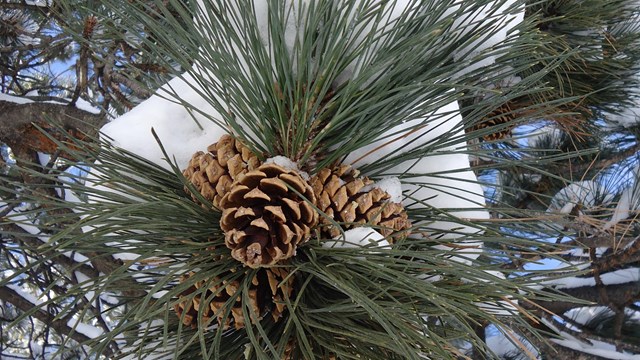
Ponderosa Pine cones
Ponderosa Pine cones are intricate compared to the mighty tree's size. 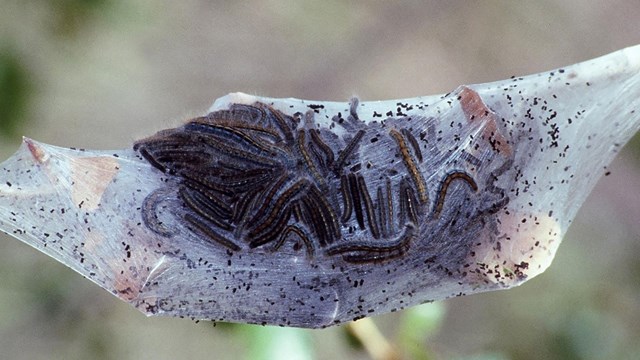
Tent Caterpillars
Insects like these tent caterpillars are plentiful in the montane.
| ||||||||||||||||||||||||||||||||||||||||||||||||||||||||||||||||||||||||||||||||||||||||||||||||||||||||||||
Last updated: May 2, 2018
